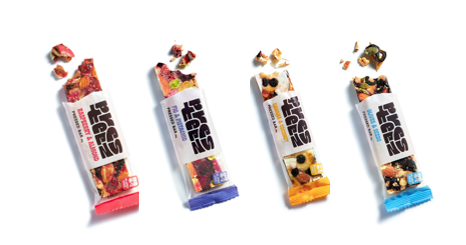
The Three Main Considerations When Creating a Food Item for Retail
22nd July 2023The Three Key Considerations When Creating a Food Item for Retail
Creating a successful food item for retail requires more than just a delicious recipe. From concept to packaging, there are essential factors that every food entrepreneur and producer must carefully consider to ensure their product stands out on store shelves and appeals to the target market. At Lumiere we assist retail brands and new start ups with getting their product to market. In this article, we will explore the three most crucial considerations when developing a food item for retail.
1. Market Research and Target Audience
The first and foremost step in creating a food item for retail is conducting thorough market research. Understanding the current trends, consumer preferences, and needs is critical to crafting a product that will resonate with the target audience. This research will help you identify gaps in the market, potential competitors, and unique selling points for your product.
Identify your target demographic – Who is the ideal consumer for your food item? Consider factors such as age, gender, lifestyle, dietary preferences, and location. Understanding your target audience will enable you to tailor your product’s characteristics to meet their specific needs and desires.
Analyze the competition – Research existing products that are similar to your idea. Identify their strengths, weaknesses, and pricing strategies. This analysis will help you differentiate your food item from competitors and give it a competitive edge.
Addressing consumer demands – In recent years, consumers have become increasingly health-conscious and environmentally aware. Consider how your product aligns with these trends. Is it organic, gluten-free, vegan, or sustainably sourced? Catering to these demands can give your food item a significant advantage in the retail market.
2. Recipe Development and Quality Assurance
The heart of any successful food item is its recipe. Creating a delectable and consistent product is essential for building brand loyalty and positive customer reviews. Here are some key points to consider during recipe development:
Taste and Flavor: Your food item must deliver on taste and flavor. Conduct taste tests with a diverse group of individuals to gather feedback and refine your recipe accordingly.
Consistency: Ensuring consistency in taste, texture, and appearance is vital. Implement quality control measures to maintain the same high standard in every batch.
Ingredients: Choose high-quality ingredients that align with your product’s positioning and meet industry standards. Be transparent about the sourcing of ingredients to build trust with consumers.
Food Safety: Prioritize food safety throughout the production process. Implement good manufacturing practices (GMPs) and conduct regular quality checks to prevent any contamination or health hazards.
Shelf Life: Assess the product’s shelf life and consider the use of natural preservatives to extend it while maintaining product quality.
3. Packaging and Branding
The packaging of your food item plays a significant role in attracting customers and conveying your brand message. It is often the first point of contact consumers have with your product, so attention to detail is crucial:
Eye-catching Design: Invest in visually appealing packaging that stands out on crowded store shelves. The design should reflect your brand’s personality and resonate with your target audience.
Information and Transparency: Include clear and concise information on the packaging, such as product name, ingredients, nutritional facts, allergen warnings, and storage instructions. Transparency builds trust with consumers.
Sustainability: As environmental concerns grow, eco-friendly packaging solutions can enhance your brand’s image and appeal to environmentally conscious consumers.
Brand Story: Create a compelling brand story that communicates the mission, values, and passion behind your food item. A strong brand narrative can evoke emotions and create lasting connections with customers.
Conclusion
Creating a food item for retail requires a meticulous approach that considers the market, recipe development, and packaging. By conducting thorough market research and understanding the target audience, developing a top-notch recipe, and designing attractive and informative packaging, you increase your chances of success in the competitive retail landscape. Remember, it’s not just about making a tasty product; it’s about creating an experience that keeps customers coming back for more.
To learn more about our food retail consultancy contact us here
For more related contact visit our Strategy page